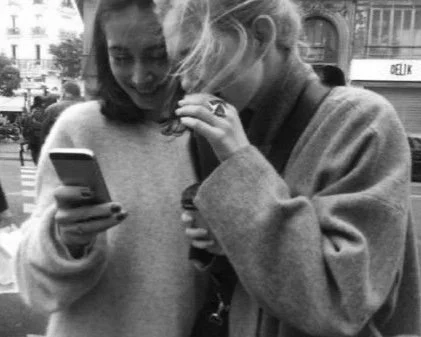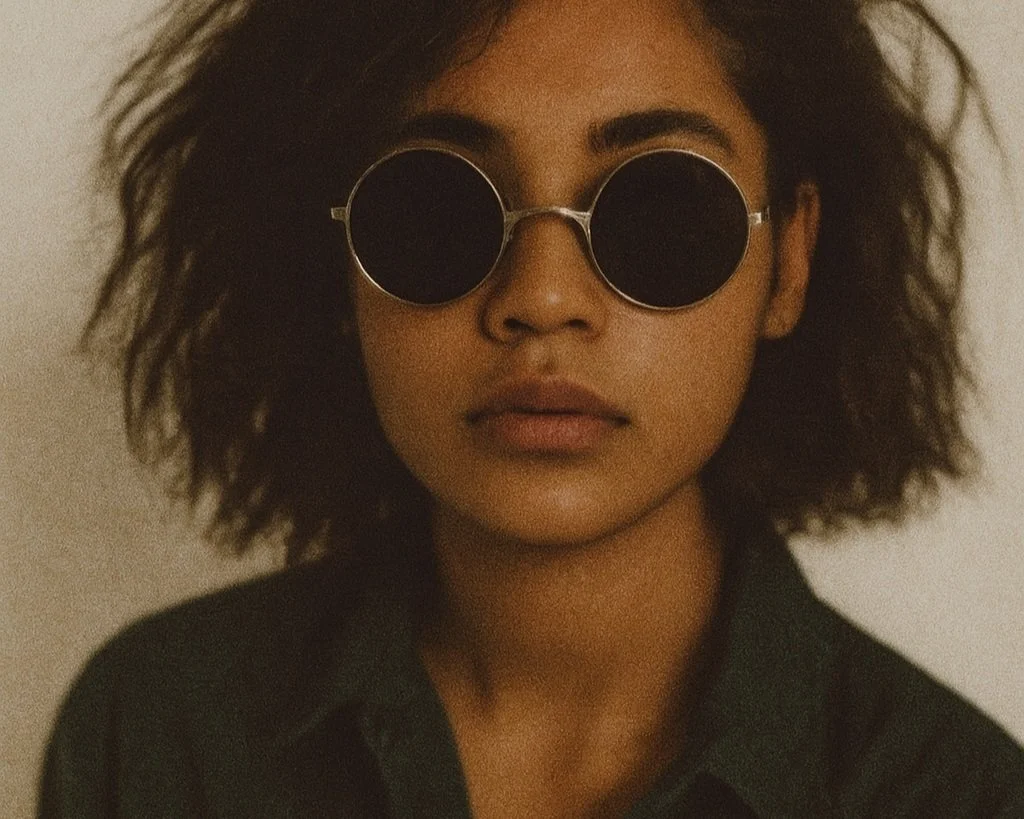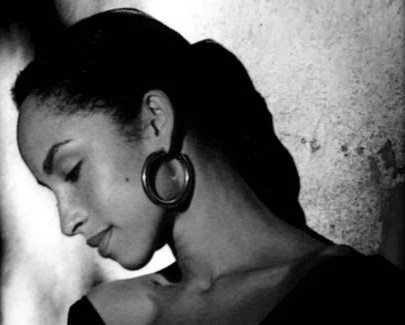The Resurgence of Surrealism in Art and Beyond
Society is defined by screens, simulations, and subconscious scrolling, but the resurgence of surrealism offers an aesthetic antidote—a portal into a softer, stranger, and more imaginative reality.
Rooted in the early 20th-century avant-garde movement, surrealism emerged from the emotional wreckage of war and the explorations of the subconscious, celebrating the irrational, the symbolic, and the sublime. Now, a century later, contemporary surrealism has evolved into a cultural touchstone.
No longer confined to gallery walls, it shapeshifts across mediums—from surrealist art home decor to digital dreamscapes on TikTok, from couture fashion to AI-generated visuals. We’re not just observing the movement—we’re living inside it. In a time that often feels fractured and overstimulated, surrealism doesn’t offer clarity. It offers poetry.
-
Introducing The Parlor, an exclusive repository of 100+ personal growth, self-care, and luxury living resources to help you thrive.
-
Explore The Dossier, our premium career and business intelligence platform for luxury industry professionals and brands.
What Is Modern Surrealism?
Modern surrealism reimagines the subconscious through a contemporary lens. Think digital collages, AI-generated art, immersive installations, and interiors that twist logic into visual intrigue.
Where traditional surrealism gave us melting clocks and floating apples, today’s version is more sleek, conceptual, and emotionally charged. It lives on mood boards, Pinterest carousels, AI campaigns, and cinematic vignettes on social media. Common visual codes include:
Juxtaposition: Combining unrelated objects—like a mirror in a forest or a pearl inside a raw egg—to evoke symbolic tension
Distortion: Warping time, space, and proportion for emotional or psychological effect
Symbolism: Using archetypal motifs—eyes, hands, water, mirrors, wings—to awaken the unconscious
Dreamscapes: Environments that are ethereal, nostalgic, or subtly unsettling
More than a style, modern surrealism is a visual language for dreamers—and it’s rewriting the rules of reality.
The Philosophy Behind Surrealism
Surrealism isn’t just visual—it’s intellectual resistance against logic as the only source of truth. It’s a return to the intuitive, symbolic, and spiritual. It’s a worldview that invites wonder.
Surrealists, originally influenced by Freudian psychoanalysis and post-war trauma, believed imagination was liberation. In today’s algorithm-driven, overly optimized world, surrealism has reemerged as a counterspell. It asks us to:
Look twice. To question surface reality and awaken the subconscious layers beneath it.
Feel deeply. To treat emotion not as weakness, but as insight.
Embrace absurdity. To allow contradiction and unpredictability to inspire rather than repel.
Create from intuition. To make space for spontaneity, dreams, and unconscious symbolism in how we design, dress, and express.
Value the symbolic. To seek meaning not only in data, but in metaphor, memory, and mystery.
Not everything must make sense to be meaningful. Some of the most visionary ideas are born from irrational beauty.
Why Surrealism is Resurging
We’re living in paradox: hyperconnected yet emotionally detached, overstimulated yet undernourished creatively. Surrealism speaks to this tension by offering mystery over clarity, symbolism over literalism, and escape without abandonment.
Here’s why surrealism and the dreamcore aesthetic resonates now:
It allows us to feel more deeply in a filtered, performative world
It reclaims imagination as a powerful form of self-expression and liberation
It offers escape—not to forget reality, but to reinterpret it
It mirrors the inner landscape: emotional, fragmented, fantastical
Surrealism on Social & Digital
Platforms like Pinterest, Tumblr, and TikTok are overflowing with hashtags like #dreamcore, #weirdcore, and #surrealhome. These aren’t fleeting aesthetics—they’re visual manifestations of a collective subconscious. On social media surrealism has become the aesthetic of escapism but with layers of symbolism and softness:
Blurry video edits with nostalgic music
Floating text in liminal spaces
Analog imagery mixed with digital overlays
Environments that look like dreams you forgot you had
Meanwhile, AI-generated art using tools like DALL·E, Runway ML, and Midjourney allows artists to render impossible scenes with eerie precision—ghost cities, double moons, liquid shadows, and flora-human hybrids.
Surreal home styling on Pinterest is filled with pastel lighting, sculptural furniture, and reflective surfaces. Even casual home vlogs now mimic surreal short films—with mirrored reflections, cloudy soundscapes, and inner monologue-style narration.
How Brands Use Surrealism
In an age where attention is fleeting and expectations are hyper-rationalized, surrealism in advertising offers something rare: emotional provocation. It taps into the imagination before the intellect, creating lasting impressions that logic alone can’t achieve. Premium and luxury brands have especially embraced surrealism to:
Differentiate themselves: In a sea of sameness, surreal imagery instantly disrupts scroll fatigue and visual predictability
Spark emotional connection: The subconscious symbols of surrealism—like mirrors, floating objects, and dreamlike scenes—activate memory, nostalgia, curiosity, and wonder
Encourage consumer interaction: Surreal campaigns often invite interpretation, which strengthens brand intimacy. When audiences assign their own meaning, it becomes personal
Examples abound:
Schiaparelli uses mythic imagery to present fashion as myth-making
Burberry’s Dreamscapes campaign blurred reality and fantasy to provoke reflection on identity
Apple and Loewe have launched visual stories where narrative, product, and emotion blend seamlessly into surreal editorial
Surrealism in marketing transforms campaigns into canvases, products into poetry, and consumers into collaborators. It reminds us that desire often emerges from what we feel, not what we know.
Elevate Your Life
Take our conscious luxury course and turn your life into a masterpiece of bespoke moments tailored to your distinct tastes and personal preferences.
Embrace Surrealism in Interior Design
Modern surrealism isn’t confined to galleries or digital art—it’s shaping how we live. Interior design inspired by the surrealist aesthetic invites emotion, imagination, and subtle disruption into domestic spaces. Instead of following linear rules or traditional styles, surrealist interiors are immersive, intuitive, and emotionally textured—meant to feel as much as function.
The goal is not to overwhelm your home with theatrics, but to curate moments of unexpected beauty. Here’s how to bring the surrealist spirit into your interiors with elegance and depth:
Choose Art That Feels Dreamy
Surrealist art speaks to the subconscious. It’s often symbolic, emotionally charged, or gently disorienting. Instead of choosing art to match your furniture, choose pieces that evoke a sensation, a memory, or a sense of wonder.
Use large-scale pieces to anchor a space or small surreal prints to create a gallery wall that feels like a personal dream archive. Look for:
Portraits with floral or celestial overlays
Landscapes that shift scale or melt into abstraction
Eyes, hands, mirrors, and moons as recurring symbols
Hyperrealist pieces with one uncanny detail
Where to source:
Marcella Anacona for feminine surrealist prints
Cinta Tort Cartró for emotive body symbolism
Tappan Collective for affordable, visually rich works
Jonathan Adler Muse Collection for ceramics with sculptural faces
Seletti avant garde and romantic artwork
Add Sculptural and Abstract Elements
Surrealism transforms utility into storytelling. Every object becomes an opportunity for surprise, metaphor, or play. Seek out:
Lip-shaped sofas, a playful nod to Dalí and sensualism
Cloud armchairs and puff-shaped ottomans that feel ethereal and whimsical
Blob mirrors and asymmetrical frames that distort reflection and invite curiosity
Floating shelves and abstract lighting that challenge gravity and symmetry
Hand-shaped chairs, foot lamps, or shell sconces that hint at natural and anatomical form
Even functional pieces—a side table, a vase, a candleholder—can feel sculptural if the shape is unusual, the material unexpected, or the placement poetic.
For a quieter interpretation, opt for high-design organic forms: curved wood, polished concrete, resin waves, or stone in biomorphic shapes. These materials bring emotional texture without loudness. Let your home feel like a story being told in form and shadow.
Curate Color Through Emotion
In surrealist interiors, color is not just decorative—it’s atmospheric. It should evoke a mood, memory, or imagined world. Rather than choosing tones based on seasonal trends or matching palettes, choose hues based on how you want the space to feel. Examples:
Lavender + Gold: ethereal, dreamy, otherworldly
Burnt Sienna + Dusty Pink: nostalgic, intimate, romantic
Ink Blue + Silver: contemplative, mysterious, lunar
Moss Green + Black: grounding, alchemical, shadowy
Play with unexpected combinations to create gentle visual friction. Contrast matte finishes with high gloss, or pair pastel tones with dark grounding elements for balance.
Play With Scale and Spatial Illusion
One of surrealism’s core principles is the disruption of spatial logic. In interior design, this translates to reflective surfaces, altered proportions, and clever composition that invites the viewer to pause and reinterpret. Ways to experiment:
Place a mirror on the floor, behind an object, or on the outdoor terrace to reflect light and scenes
Use oversized lamps or chairs next to miniature accessories for delightful imbalance
Add a transparent table that gives the illusion of floating
Hang artwork asymmetrically or place it leaning rather than mounted to catch the eye
These subtle disruptions make a space feel dynamic and layered—like walking through a daydream.
Let Symbolism Lead Styling
Incorporate objects not for their use, but for their meaning. Surrealist interiors are rich in archetypes—visual motifs that stir the subconscious. Symbolic décor ideas:
Hands and eyes: as candleholders, knobs, or sculptures
Moons and stars: on lighting fixtures, wall art, or linens
Water and waves: echoed in vases, mirrors, or curved furniture
Mirrors and glass: to reflect, refract, and expand perception
You’re not just decorating a space—you’re designing a psychological landscape. Surrealist interior design isn’t about maximalism or fantasy for fantasy’s sake. It’s about emotion, intuition, and metaphor—turning your home into a quiet visual dialogue between the real and the imagined.
Experiment With Surrealism in Fashion
Surrealism has become one of the most compelling forces in fashion today—not merely as a visual reference, but as a statement of intention. For those who want to go beyond uniformity and hyper-functional capsule wardrobes, surrealist fashion reclaims clothing as art, identity, and emotional expression.
Surrealist fashion blurs the line between adornment and art. It doesn’t just dress the body, it animates the imagination. From runway to ready-to-wear, surrealism is no longer niche but becoming an essential aesthetic. It allows designers and wearers alike to subvert norms, stretch perception, and spark conversation.
A Legacy of Illusion and Emotion
Schiaparelli, often credited as the first surrealist fashion house, partnered with Salvador Dalí in the 1930s to create wearable illusions—a shoe-hat, a skeleton dress, and lobster motifs that shocked polite society. Today, under creative director Daniel Roseberry, the house continues this tradition with golden facial sculptures, breastplate corsets, and anatomical accessories that straddle the line between myth and body.
Iris van Herpen creates sculptural garments using cutting-edge materials and 3D printing. Her designs, often described as “wearable dreams,” mimic water, wings, and frequency patterns—expressing movement, sensation, and transformation in fabric.
Loewe, under Jonathan Anderson, used surrealist play to transform mundane items into luxury statements. Whether it’s balloon heels, cloud bags, or pixelated garments, the brand constantly redefines where fashion ends and fantasy begins.
Enhance Your Wardrobe with Surrealism
You don’t need a couture budget to embrace the surrealist aesthetic. Small symbolic touches or sculptural pieces can transform the familiar into the extraordinary. Try incorporating:
Accessories as visual metaphors: eye-shaped pins, hand earrings, lips on bags
Distorted silhouettes: oversized sleeves, inflated shapes, melted or deconstructed seams
Unexpected layering: sheer over silk, gloves with jewelry, structured pieces over soft textures
Abstract or dreamlike prints: clouds, mirrors, galaxies, celestial bodies, or Rorschach-style patterns
The key is to wear something that makes people look twice because it’s strange, beautiful, or arrestingly symbolic. Surrealist style is not costume. It’s a language. One that speaks in suggestion, illusion, and emotion.
surrealist fashion Designers to Explore
For those ready to invest in statement surrealist pieces, consider:
Schiaparelli Jewelry: from bold ear sculptures to gilded anatomical brooches
Iris van Herpen Collections: avant-garde couture for the visually fearless
Loewe Bags and Footwear: playful distortions of the everyday
Maison Margiela Artisanal: for deconstructed surrealism with poetic resonance
Vintage treasures from Elsa Schiaparelli, Comme des Garçons, or Jean Paul Gaultier
Dream as a Design Language
Modern surrealism reminds us that design doesn’t have to be logical to be luxurious. The most beautiful moments often occur in the liminal between the real and the imagined, the seen and the felt. So, curate your space like a gallery of dreams. Adorn yourself with magic and metaphor. Create a life that whispers instead of shouts. Because sometimes, the most surreal things are the most sublime.









